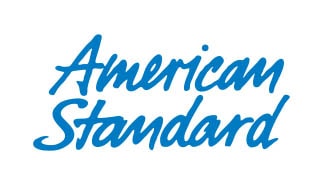Published on
October 18th, 2021The Importance of Control Valves
If you own or manage a property in New York City, whether it’s a single-family home or large apartment building, it’s vital to understand the importance of control valves for your plumbing system. Here’s a review of why control valves are so essential, what they do, and what type of valves are used for various plumbing needs.
What Are Control Valves?
Performing a vital plumbing function
Control valves are used to manage the flow of water around your property. Sometimes they are intended to reduce flow and pressure. Other valves are installed so building occupants or staff can shut off the water when they need to.
Control valves are also used for other functions, such as to handle gas flow.
Why Are Control Valves Important?
Multiple advantages for modern plumbing
As you’ll read in the descriptions below, control valves have multiple functions for a variety of plumbing scenarios. The type of valve is related to its unique importance in protecting your property.
Being able to completely shut off water is necessary if you have a plumbing emergency, such as a leak or a burst pipe. You’ve probably had at least one occasion where you urgently needed to turn off the water supply for your property. Knowing where your shutoff valve is located can mean the difference between stopping an emergency cold and suffering massive water damage.
Smaller shutoff valves allow property owners, superintendents, and professional plumbers to perform repairs without getting drenched and flooding the property. Imagine trying to repair a toilet when the tank is constantly filling!
Other control valves protect your pipes, plumbing components, and therefore the rest of your property. Excessively high pressure, for example, can put too much wear and tear on your faucet cartridges and gaskets, causing them to drip or run even when turned to the off position.
What Kinds of Control Valves Are Commonly Used?
Gate valves
Gate valves are used to allow full water flow or to shut the flow of water off completely. Because of this, they are typically installed to control the main water supply or a major branch. When we see problems with these valves, it’s usually because of one of two issues:
- The valve is corroded, rusted, or encrusted with mineral scale buildup from having been left in one position for months or years at a time.
- The valve is being incorrectly used to control the flow rate of water and is suffering wear and tear accordingly.
Gate valves are so named because they have a twist handle that raises or lowers an internal gate to allow or prevent water flow.
Ball valves
These valves are also used for main and large branch shutoffs. Like gate valves, they should have an all-or-nothing function. A ball with a hole in the middle is connected to the handle of the valve. When the handle is parallel to the pipe it controls, the valve is open. When it’s perpendicular to the pipe, it means the valve is closed. Clients like ball valves because they can tell in an instant if the water is on or off.
Fixture shutoff valves
Also known as stop valves, fixture shutoff valves control just one fixture, like a toilet or sink. These valves are handy because you can work on fixtures without having to shut off the entire water supply – great if other tenants would be affected.
These valves usually have a wheel or knob you turn to control water, and they come in different versions that accomplish the same thing. Some use a compression washer, while others employ a diaphragm mechanism to allow or prevent water going to the fixture.
If you suddenly find no water going to a fixture in a bath or kitchen, it’s worth checking the shutoff valve first. Sometimes they are inadvertently closed during cleaning or by kids playing with them.
Pressure reducing valves
Pressure reducing valves do exactly what their name implies: they control water pressure by throttling it to acceptable or desirable levels. They are also known as water pressure regulators.
This type of valve is most often used when the pressure from the municipal water supply is too high. Nowadays property owners can find themselves dealing with water pressures as high as 150 psi, which can damage internal plumbing elements and appliances, cause wasteful leaks, and result in burst pipes.
We like to use them any time we see municipal pressure over about 80 psi. A spring and diaphragm inside the valve let the user adjust the pressure to a specific level.
Check valves
If you have a backflow prevention device in your property, you have a form of a check valve. This type of valve keeps water flowing only in one direction. In the case of a backflow preventer, it ensures wastewater doesn’t flow in the wrong direction and contaminate clean water for drinking and washing. You’ll also find check valves in irrigation systems and hose connections.
Butterfly valves
Butterfly valves use a metal disc inside to control the flow of water. This allows users to precisely regulate the amount of water passing through the valve. They are prone to gasket wear and tear and should thus be checked regularly for this. We don’t find them as often in residential settings as much as in industrial ones.
Need Help with Your Water Valves?
Here to help
If you need assistance with the water valves or other plumbing system parts in your property, contact Sanitary Plumbing and let us know how we can help. We can suggest valve models for your particular needs or repair faulty valves. We’ll also help you exercise your valves that are always in the same position so they don’t become stuck that way.
Call us at 212-734-5000 or use our easy online form to schedule your appointment. Don’t wait until you have a valve problem that results in property damage to get in touch! Reach out today.








